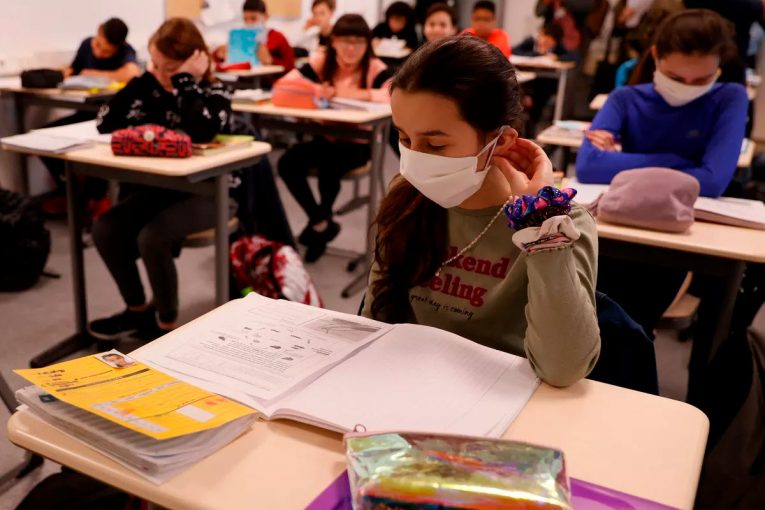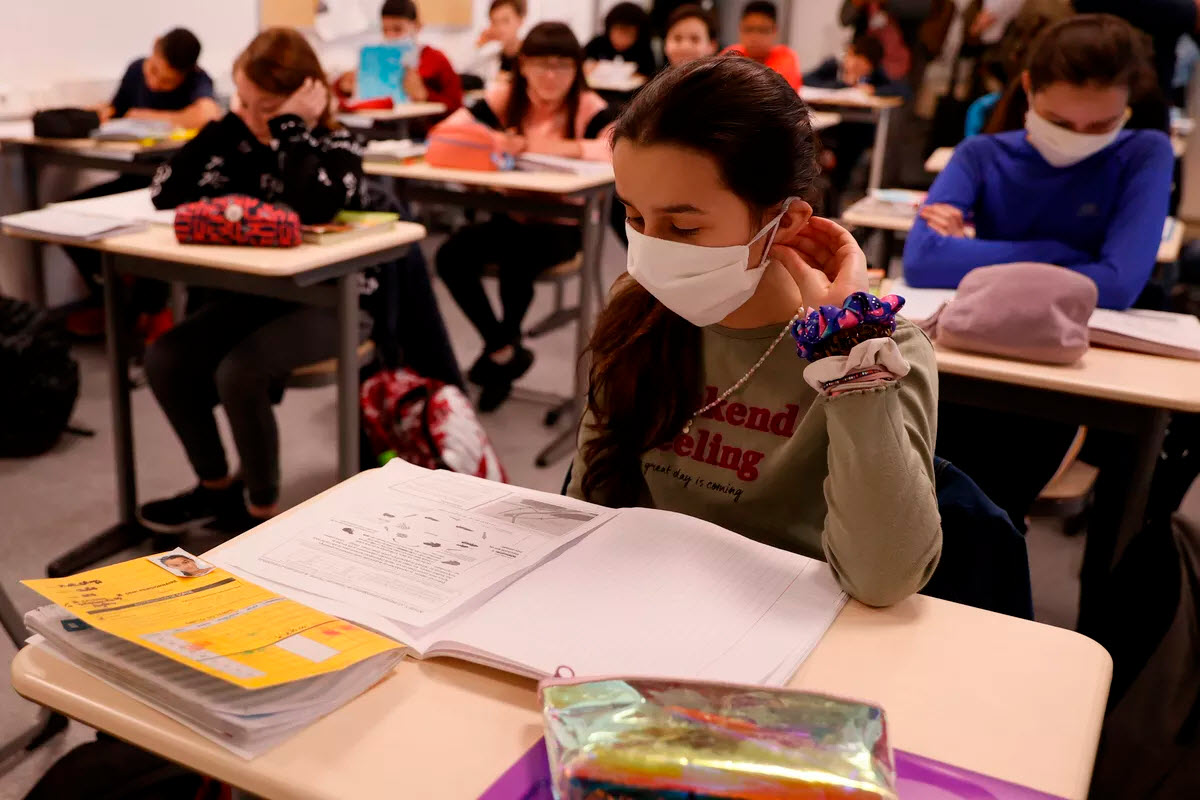

By David M. Greenwald
Let’s be honest, for parents, distance learning is a huge failure. I’m not pointing the fingers at anyone because we are in a tough spot that no one anticipated a year ago.
Last week it was my turn to have the kids in my office as I attempted to work. Difficult times. One child likes to switch over to games when I’m not looking while the other slips onto YouTube to watch programming as her class plays in the background. You have to stay on top of them—and even then, they have a decided advantage.
Some parents are joining forces to attempt to push the district to re-open. But now? At the height of the worst spike in COVID cases—locally and nationally? Does that really make sense?
One of my thoughts this weekend has been to run the clock a little. Delay the start of instruction after winter break. Push the time closer and closer to April—push us to a time when COVID cases are declining. Run the school year into the summer.
But re-open now? That just seems irresponsible. It puts everyone at risk, particularly when we really don’t know what we are up against.
I read the op-ed in the Enterprise by Mike Creedon. I’m just not sold that we have the science as down as he and others claims.
He writes writes: “As physicians, public health experts, educators and parents, we are calling on parents to join the Davis Joint Unified School District Parent Coalition to demand the DJUSD Board rapidly adopt a plan to provide an in-person learning option for all students, with execution tied to the California tier system; these in-person learning options should be provided the moment  state and local health prerequisites are met.”
state and local health prerequisites are met.”
He notes: “The Centers for Disease Control has also gone on record to state they did not recommend school closures, either in the spring or now, finding when cases of COVID-19 appear in the schools, contact tracing has shown these cases were not acquired in the schools.”
But is now the time to do this? Here we are, a record surge threatening to overwhelm our health system—do we want to really risk more by opening things up now?
The data that this group is using is, by the way, dated. A month ago, the CDC removed the guidance that pushed for schools to reopen and downplayed the risk of transmission.
CDC told the media: “Some of the prior content was outdated and as new scientific information has emerged the site has been updated to reflect current knowledge about COVID-19 and schools.”
They note that, while it is true that children are less likely to become seriously ill from COVID, much less is known about the role that they pay in transmission.
“The voices of experts are saying, in unison and as loud as they can, that schools are low-risk environments for both children and teachers,” the writers claim.
They cite Dr. Anthony Fauci who said, “If you look at the data, (the spread of COVID-19) among children and from children is not really very big at all. Not like one would have suspected.”
But even there the data is more mixed. In part because, while the students are less likely to get sick for reasons we still don’t fully understand, teachers do and there is evidence that the broader community does as well.
This weekend, for example, the NY Times found that, while young people have less COVID risk, “in college towns, death rose fast.”
They found, “Links between university outbreaks and deaths in the wider community are often indirect and difficult to document, but some health experts say there are clear signs of a connection.”
The Times reports: “In late August and early September, as college students returned to campus and some institutions put into place rigorous testing programs, the number of reported infections surged. Yet because serious illness and death are rare among young coronavirus patients, it was unclear at the time whether the growth of infections on campus would translate into a major health crisis.”
But since the end of August, “deaths from the coronavirus have doubled in counties with a large college population, compared with a 58 percent increase in the rest of the nation. Few of the victims were college students, but rather older people and others living and working in the community.”
Given that an 18-year-old college student is not that discernible from a 16-year-old high school student, shouldn’t that give us pause before re-opening?
As I have written many times, I am as frustrated as anyone about the difficulties of distance learning for students, especially my kids’ ages. But we are close to being able to put a cap on this pandemic as vaccines roll out starting today. We aren’t there yet and acting on incomplete date that is evolving in our understanding is not the approach.
We should stay the course for now—once we have the current spike under control and we are closer to a vaccine rollout for teachers and students, we should revisit this issue. In the meantime, I would suggest pushing back restarting instruction into February and running the school year into the summer, or perhaps even through the summer.
That way the community remains safe and students can start catching up on lost time.
—David M. Greenwald reporting
Support our work – to become a sustaining at $5 – $10- $25 per month hit the link:







I don’t suppose it will come as a surprise to anyone where I fall on this issue. The CDC as well as most of the public health recommendations have been reactive. Meaning, we wait until there is a huge spreader event, and then say, “Wow! I guess we shouldn’t have done that” instead of comparing the risk factors involved in various activities and then making risk-based decisions. People have noted repeatedly that it is hard to keep their children from engaging in illicit activities at home ( watching other programs instead of working). Do we suppose they will magically become 100% compliant with masking, distancing and disinfecting. I can tell you 100% they will not. How? My son is a high school sports trainer. He is extremely frustrated because just as soon as walks away from a player who has just coached on mask-wearing, he turns away takes a few steps and the mask is down again. Same with distancing.
The difference is when the child doesn’t follow the rules at home, it is a nuisance and temporary detriment to their learning. When they are out in the community and noncompliant, that act has the potential for killing someone.
As for the efficacy of contact tracing, it is only as good as people’s willingness to talk with and share information with the tracer. This has been notoriously low and ineffective.
We are in our third spike driven by the desire to “loosen standards” and “open up” and “get back to normal”. We went from 22 dead at the end of the first lockdown to 89 dead as I write. Our current testing positivity rate is 11% indicative of widespread transmission in the community. When are we going to learn from our own past experiences and mistakes? What percentage and number of deaths is acceptable to our “reopeners”?
Do all of the classrooms have sufficient air circulation? Are there enough portables in the district to allow for the distancing, spread out the desks? More to the point: the teachers are opposed to reopening by a very substantial margin.
I get the frustration of the parents. But if I had a child in the schools right now, I would want to see greater adoption of the vaccine and clear implementation of the safety guidelines at every school before my kids would be going back into the classrooms.
“I get the frustration of the parents. But if I had a child in the schools right now, I would want to see greater adoption of the vaccine and clear implementation of the safety guidelines at every school before my kids would be going back into the classrooms.”
That’s how I feel
My elementary aged grandchildren all returned to school six weeks ago, everything has been fine at the school and at home. The school took precautions and they seem to be working.
How do you know?
They take every child’s temperature every day before entering, they practice distancing, masking, spacing on the playground, etc. They go half days, the other half remote at home. Only students are allowed into the school, no parents. In the six weeks there has only been one reported case and they don’t even know for sure if that was a result of school or an outside source. I would call that successful so far. My daughter has been happy with the results.
Keith
That is great to hear. Where are they located? Is there positivity rate the same as ours, or better controlled?
I agree with most of this. I understand the frustration of parents. I know a couple that moved their family to Texas for a year just so the kids could go to school! Yet whenever I hear people talk of this, they always talk about how kids don’t get very sick, which is true, but as you point out what isn’t discussed is how are they at spreading the thing, and I haven’t been able to find much data on this for some reason.
I think you buried the lede here in a way – not that your point isn’t also a lede. But, the superspreading in colleges that the study you cite describes isn’t happening here in Davis. I often criticize UC Davis, but from what I have read they are doing an incredible job of taking a multi-prong strategy that has kept the transmission rate in check. I commend UC Davis in the highest for this.